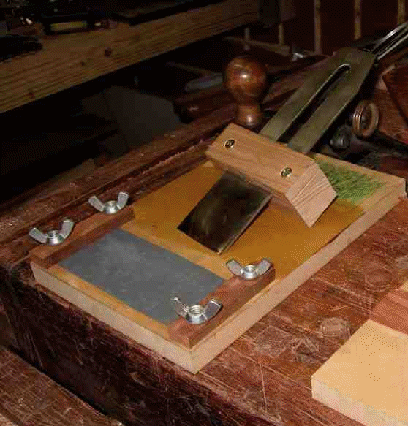I mentioned something about this in another thread last week and had been thinking about starting a thread to see if there were viable alternatives out there that were similar in price or possibly even cheaper.
My candidate is an inexpensive 1000-grit diamond plate and a loaded strop. All in you're looking at under a tenner.
I got the diamond plate from AliExpress specifically to see how it compared other honing surfaces I have. It turned out to work great and it very soon occurred to me that it could be a standalone honing option if need be. Being diamond it's aggressive enough to hone quickly even on harder steels but fine enough to leave a good usable edge (obviously it'll wear in and become finer with use as all diamond plates do). By itself it works well enough, but combining it with a loaded strop I think would cover the needs of almost all users as long as they're not wedded to working on stones.
The strop can be anything you like, from the surface of MDF or planed hardwood to some random bit of leather or tough cloth stuck to a scrap of plywood or chipboard. For the compound any fine metal polish, cutting compound/scratch remover, Chromium Oxide crayon or commercial honing block will do.
Strop: free.
Compound: £5 or less.
Diamond plate: I paid € 5,51 for mine, they're currently at €3.84 which is £3.30 at current exchange rates.
Here's my plate:
I just checked back and I've had it longer than I thought, very nearly a year. It's had light but regular use, mostly used dry but occasionally with white spirit as a lubricant.
So what would your cheap-as-chips honing setup be, bought new? Can't be anything that relies on boot-fair finds; if you're lucky enough to have any good car boots near you there's a good chance you could pick up a great old oilstone for 50p to a couple of quid of course, but that sort of thing is out of reach of anyone living elsewhere.

































